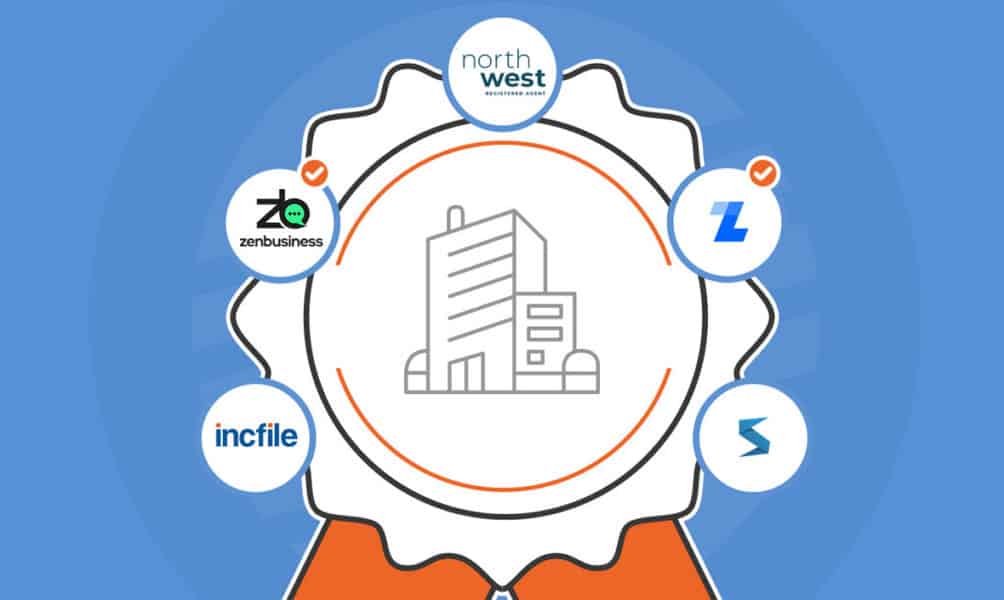When you start a business and form a limited liability company (LLC), a key step is opening a business bank account in order to separate yourpersona ...
How to Finance a New Business – 11 Options to Consider
Written by: Carolyn Young
Carolyn Young is a business writer who focuses on entrepreneurial concepts and the business formation. She has over 25 years of experience in business roles, and has authored several entrepreneurship textbooks.
Edited by: David Lepeska
David has been writing and learning about business, finance and globalization for a quarter-century, starting with a small New York consulting firm in the 1990s.
Published on October 13, 2021

You may have a great business idea and big dreams about launching and growing a successful company, but you’re having troubling coming up with all the funds you need to get started. Don’t worry, there are a multitude of financing options available to start and grow your business.
Whether you’re just starting out or have a small business you want to grow, there are several options to choose from to get the funds you need. The key is to educate yourself about each method to decide which is right for you.
Here is a list of 11 common methods and a brief explanation of each.
1. Bootstrapping
Bootstrapping essentially means working with what you already have. You can tap into your savings, the equity in your home, or other assets that you may have.
Bootstrapping also means keeping your costs as low as possible. You can do this by putting every dollar of revenue that you make back into the business – which means you don’t pay yourself until the business can afford to pay you and sustain itself.
You can also save costs by “wearing many hats” meaning that you will perform multiple functions within your company rather than hiring employees or outsourcing various operations.
Bootstrapping can be a great way to start your business without giving up equity or paying interest on loans. Many entrepreneurs have done so successfully. However, you need to determine if you want to risk your personal savings or assets, and if you can afford to sacrifice a paycheck until you get your business going.
If you do not want to take the risk, or you don’t have assets to tap into, you’ll need to look for other options.
2. Credit Cards
Most of us have credit cards and get new credit card offers in the mail every week. You could choose to use your credit cards to pay for your business expenses and pay them off later when you’re generating enough revenue. If you have good credit, you could tap into thousands of dollars of available credit on your cards to pay for your inventory, marketing, and other expenses.
If you use your personal credit cards, though, you need to make sure that you track your business expenses vs. your personal expenses for accounting and tax purposes. A better option might be to get a business credit card.
When choosing a credit card, pay attention to the interest rate and annual fees. Credit card financing can get expensive, especially when you take cash advances. Cash advances usually come with a fee of around 3% of the amount you take, plus interest. Also, keep in mind that you will have to make payments, so don’t get yourself in a situation where you are too tight on cash flow because you’re making multiple monthly payments on your cards.
3. Family and Friends
Many entrepreneurs start their new company with a little help from friends and family. It’s sometimes called the 3 Fs: family, friends, and fools, because these people are more likely to take a risk on your business than seasoned investors.
Funding from family and friends can be in the form of a loan, and they will usually give you better loan terms than a bank. It can also be in the form of an equity transaction in which you give them a percentage of ownership in the company in exchange for the funds.
In either case, it’s a good idea to consult with an attorney before doing this. If you take a loan, the attorney can write a loan agreement for you. If you do an equity transaction, there are U.S. Securities and Exchange Commission (SEC) regulations to consider. Violating these laws can come with huge penalties and other repercussions.
You also need to consider how getting funding from family and friends could affect your relationships. If your business fails and you’re not able to pay them back, it could cause rifts within your family and friends’ circle. You need to decide if it is worth risking valuable relationships to get the funds you need.
4. SBA Loans
The Small Business Administration (SBA) offers many loan programs for businesses. For a startup business, an SBA microloan is the most feasible option compared to the other SBA loan options.
Microloans can be up to $50,000, although the average loan amount is $13,000. Usually, some kind of collateral is required, and you will also need to personally guarantee the loan. This means that you are personally responsible for paying back the loan.
Microloan funds can be used for inventory, working capital, furniture, or equipment. They cannot be used to pay existing debts or to purchase real estate.
The term of a microloan depends on several factors, but the maximum is six years. Interest rates are generally favorable compared to bank loans.
Microloans are a great short-term debt option to start your business, but you will have to make payments, so you will need to calculate that into your cash flow forecast.
5. Business Loans
Business loans from banks and other lenders can come in the form of a term loan or a line of credit. A line of credit is similar to a credit card – you use it as you need it and make payments on the part that you have used.
Business loans can be tough to get approved for when you have no track record in business, but it is possible. Banks will be more difficult than online lenders, and either way you will probably be required to personally guarantee the loan.
Some lenders will offer loans for specific purposes, such as equipment loans. Rates will be based partially on risk, so be sure that you clearly understand all the terms of the loan, including the length of the term.
Again, remember that you will be making payments that will affect your cash flow until you are able to pay it back, and you will probably be personally liable for the loan.
6. Business Incubators
Business incubators are a great way for startup businesses to get funding and support. Business incubators are organizations that help startup companies from the idea stage to being self-sustaining.
Incubators provide access to funding, sometimes from government programs, and from investors. They will also provide office space, administrative support, mentorship, helpful contacts, and education.
The funding from a business incubator comes, of course, with an equity price. They will have some ownership in your company, but less control than an angel investor or venture capitalist.
You are more likely to get funding as a startup from a business incubator, though, because their sole mission is to get startup companies off the ground and to a stage where they are poised for growth. Angel investing and venture capital often will follow.
7. Angel Investors
Angel investors are individuals or companies that invest in startup companies in exchange for equity in the company. There is nothing to pay back, no payments, just a percentage of your business.
Angel investors are taking a risk in hopes that you can grow your company by a large amount and be acquired by another company or go public so that they get their money back plus a large return on their investment.
Angel investors will offer guidance as you start and grow your company, which can be very beneficial. However, they will also want some level of control and a large equity percentage. Many angel investors only invest in certain types of businesses, such as technology companies.
They want companies that have the potential to grow significantly because their goal is usually at least a 10-times return on their investment.
8. Venture Capital
Venture capitalists are similar to angel investors, but they usually only invest in companies that are already in business and have gained some traction. They invest larger amounts than an angel investor—usually $3-5 million or more—and they also take more equity and more control.
As a startup company, you are unlikely to attract venture capital, unless you have an idea with tremendous potential, and you can pitch that idea well. Venture capitalists also factor in the management team when deciding to invest, so they have to believe in you as a leader.
Venture capitalists may make more than one investment in your company. They may invest a first round, called Series A, and then when you grow to a certain point, they will invest a second round, called Series B. The amount they invest and the equity they take will be based on their valuation of your company.
9. Crowdfunding
The Jobs Act of 2012 loosened the SEC regulations related to business investments, which opened the door for crowdfunding. Crowdfunding involves a large group of individuals investing small amounts in a company to help the company start or grow.
There are numerous crowdfunding platforms online that you can find online where you can submit a proposal about your business, what you need money for, and how much.
Some of the platforms are investment-based, and all those investors will have a small part of the equity in your company, and some are reward-based, where the investors get something like one of your products as a reward.
Crowdfunding has become a popular way to raise money for startup companies, and many have been very successful doing so. Research crowdfunding platforms thoroughly to understand fees and terms, and carefully consider how much equity you are offering for your required investment.
The advantage of crowdfunding over angel or venture capital investment is that you will give up less equity and control. It may be harder, however, to raise as much money as you need because you are competing with all of the other companies who have posted their own proposals.
10. Purchase Order Financing
Purchase order financing can be used if you have already started to make sales, but you can’t get inventory to fulfill orders due to lack of funding. Purchase order financing companies will loan you the money to fulfill a specific purchase order by paying the supplier, and then you can pay back the financing when your customer pays you.
Purchase order financing is very expensive, usually 2-6% for one month, plus fees. It can be helpful if you are very successfully selling your product and need to keep up with your sales rate, but you should not use it long term due to the high cost.
11. Factoring
Factoring is similar to purchase financing in that it is based on specific sales. The difference is that you have already fulfilled the order and are waiting on payment from your customer. The factoring company loans you money based on your outstanding invoices that have not yet been paid.
Factoring is also expensive and should not be used long term. Both purchase order financing and factoring should only be considered short term solutions to cash flow issues.
Conclusion
Now that you understand the many funding options available to get your business off the ground, you should weigh the pros and cons of each, do further research, and determine which are best for you.
You may use different types of financing at different stages of your company’s growth. Always keep in mind, though, that at some point your company needs to be supported by cash flow. In the meantime, keep your debt low and your personal equity stake as large as possible.
Subscribe to Our Newsletter
and gain insider access to cutting-edge business insights and trends.


Comments